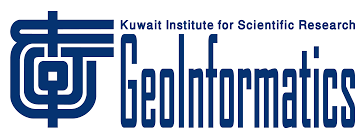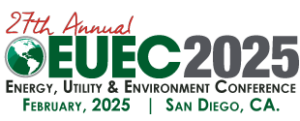Presentations on OPERATIONS & MANAGEMENT made in G6 & G8 at EUEC 2015, San Diego, CA
 G6.1 Operational Improvements with High Reactivity Hydrated Lime DSI
G6.1 Operational Improvements with High Reactivity Hydrated Lime DSI
Pat Mongoven, Business Development Manager, Mississippi Lime; Curt Biehn
High Reactivity Hydrated Lime is now being widely used in the utility industry to improve in flight capture
of acid gases. Because the highly reactive material reacts with acid gases very quickly, it allows utilities
to gain benefits beyond simple acid gas control.This presentation will briefly review the High Reactivity
Hydrated Lime technology, & focus on several full scale utility case studies. One case study will review
improved mercury capture by protecting the mercury sorbent from SO3. The remaining case studies
will focus on utilizing the DSI to not only remove acid gases, but to also protect the air preheater from
fouling. Operational results including restored MW production, avoided de-rates & avoided down time
will be presented.
 G6.2 The Application of Fuel Additives to Improve ESP Performance
G6.2 The Application of Fuel Additives to Improve ESP Performance
Paul Farber, Principal, P. Farber & Associates, LLC; Pedro Bardessi & Carlos Rojas, AES Gener
Emissions regulations in many countries around the world are lowering the levels of particulate emissions
from coal-fired power plants. In the United States these are being driven by the MATS (Mercury & Air
Toxic Standards). In Chile the pertinent regulation is Supreme Decree No. 13 “Emission Standard for
Thermoelectric Power Plants.” Regarding particulate matter (PM) Supreme Decree No. 13 sets the
emission standard for existing solid-fueled (i.e. coal/coke) plants to 50 mg/Nm3 & for new solid-fueled
power plants to 30 mg/Nm3. AES Gener is the second largest generation company in Chile in terms
of installed capacity, with 4,810 MW in operation by December 2012, including affiliates & subsidiaries
abroad. It provides energy solutions & infrastructure in Chile, Argentina & Colombia. AES Gener is
in the process of upgrading systems at its coal-fired power plants to meet the emission standards
called for in Chile. Some of these upgrades involve the installation of new particulate control & FGD
systems. While these new control systems are being engineered & constructed AES Gener is improving
the performance of some of their existing ESP’s to achieve limits of particulate emissions. Two of the
Units being upgraded are Norgener 1 & 2 located in Tocopilla in the Antofagasta Region, in the north
of Chile. AES contracted with P. Farber & Associates, LLC to explore the cost effective options for
reducing PM emissions in the interim until the new dry FGD systems.
 G6.3 Integrating ADAir-Mixer™ Technology to Optimize System Performance with ACI & DSI Applications
G6.3 Integrating ADAir-Mixer™ Technology to Optimize System Performance with ACI & DSI Applications
Elizabeth Morley, AQC Process Engineer, ADA-ES, Inc.; Travis Starns, Elizabeth Morley, Connie Senior,
ADA-ES, Inc.; Dave Dorste, Blender Products
The Mercury and Air Toxics Standards (MATS) are multi-pollutant emissions regulations for coal-fired
utility boilers. For several coal-fired boilers, achieving MATS compliance utilizes activated carbon
injection (ACI) for mercury control and potentially dry sorbent injection (DSI) for acid gas removal.
This presentation will focus on the benefits of integrating the ADAir-Mixer™ technology with sorbent
injection systems to optimize sorbent distribution and reduce system O&M costs. This proprietary
technology improves particle distribution and reduces sorbent consumption, by as much as 40% as
part of an optimized compliance strategy. Other benefits include potential to reduce number of
injection lances and increase system reliability, decrease velocity and temperature variations inlet to
the particulate collection device leading to lower particulate emissions. ADA will present results utilizing
this technology with a DSI system and present modeling results with different duct configurations.
 G6.4 Boiler Optimization & MATS Compliance Testing using Delta CO/O2 Extractive Monitoring Systems
G6.4 Boiler Optimization & MATS Compliance Testing using Delta CO/O2 Extractive Monitoring Systems
Nicholas Ferri, Co-Owner, Combustion Technologies Corporation
Today’s stringent environmental regulations often require Electric Power Plants to operate at much
lower O2 levels than in the past. Good combustion across the furnace becomes critical under these
conditions. Carbon Monoxide is a by-product of incomplete combustion which increases rapidly when
poor combustion occurs in a fuel rich environment. Standard practice has been to install a temporary
CO grid in the boiler back-pass, or economizer section. This was due to the lack of availability of a
cost effective multi-point permanent system for measuring Carbon Monoxide on Coal Fired Boilers.
Delta Measurement and Combustion Controls uses a Patented Extractive Probe designed to operate
in applications with continuous heavy particulate, and Ash loading. This paper will demonstrate the
advantages of using an extractive multi-point CO/O2 grid for optimizing combustion. The new MATS
regulations requires Coal Fired Power plants to do periodic boiler tuning, and provide documentation
to meet the MATS requirements. This paper will show how the Delta System can be used as a primary
tool for collecting boiler performance data, and for optimizing combustion. In addition the paper
will show how the Delta system can accomplish the following results. Continuously operate boiler
in optimized combustion zone; Correct for O2 error due to in-furnace leakage; Improve SCR / SNCR
Performance; Increase boiler efficiency, Lower flue gas velocities through the furnace.
 G6.5 Truly Optimized Operations: Unifying the Strategic Planning Processes
G6.5 Truly Optimized Operations: Unifying the Strategic Planning Processes
Kevin Jennison, Project Manager, Black & Veatch
The cornerstone of a plant’s operational success is the ability for independent strategic planning
components, such as fuels and reliability, maintainability and availability (RAM) to work in unison
and produce a singular outcome that relates all these variables to one another. Very often Black
& Veatch sees these independent planning components to be historically isolated within a plant’s
siloes of operation, leading to inconsistent outcomes and results which ultimately means operation
that is lacking efficiency. The way to best produce a singular optimized outcome is through an
analytics platform that integrates these individual planning tools together to better understand the
impacts of one another, such as the impact fuels may have on RAM and vice versa, as well as other
financial implications. Black & Veatch has developed an analytics platform and set of tools customers
can use to assist a plant in making the best possible choices by testing different potential scenarios
against each other for the result that takes into consideration all the original siloed planning tools. This
presentation will show how customers can benefit from an analytics platform with integrated planning
toosl to demonstrate the ability of making better decisions regarding power plant operations around
general operations, fuel, maintenance, and other mission critical plant decisions, specifically around
reliability and environmental compliance.
![]() G6.6 The Operations Conundrum: When Should Utilities Consider Outsourcing Plant O&M
G6.6 The Operations Conundrum: When Should Utilities Consider Outsourcing Plant O&M
Douglas Machon, Director, Business Development, NAES Corporation
This presentation will outline why & when utilities should consider sourcing a strategic partner for their
plant O&M requirements. The average electric utility in the U.S. has just 1-2 plants under its operational
control. As a result, many utilities do not possess expertise in facility O&M. More troublesome is that the
infrastructure requirements to respond to increased regulations on safety, environmental compliance,
& reliability standards, are growing rapidly & cannot be spread out among a larger fleet of plants. As a
result, many electric utilities, particularly those with less than 5 plants in their fleet, would serve themselves
& their ratepayers well by exploring the outsourcing of plant operations to a third-party provider. A
strong strategic O&M partner would likely: Provide greater technology expertise & specialization &
be able to enhance operational efficiencies through same-plant technologies; Achieve corporate
cost savings by spreading the costs of safety, environmental & reliability compliance, & performance
optimization personnel over a significantly larger fleet of assets; Eliminate day-to-day risks of compliance
in increasingly stringent regulations & user demands for improved service; Eliminate the day-to-day
management & administration of a large base of employees; Provide tangible additions to the asset
financial profile by leveraging fleet economies of scale via improved technical performance & purch.
 G8.1 Roadmap to Siting, Permitting, & Operating Facilities in Sage Grouse Habitat
G8.1 Roadmap to Siting, Permitting, & Operating Facilities in Sage Grouse Habitat
David Batts, Principal, EMPSi – Environmental Management & Planning Solutions, Inc.
Siting, permitting, & operating transmission & generation facilities on federal lands just became more
complex as land management agencies implement the national greater sage grouse conservation
planning strategy. The Bureau of Land Management & USDA Forest Service are amending over 80
land use plans in nine western states to provide protections to keep the greater sage grouse from
being listed on the Endangered Species Act. Covering over 165 million acres, these protections include
limiting where transmission lines & energy facilities can be located, requiring special design features
for their development, & extensive mitigation & monitoring protocols. In addition to federal lands,
California, Nevada, Oregon, Idaho, Utah, Colorado, Wyoming, Montana, & North Dakota have state
based plans that protect sage brush habitat on private & state lands. This presentation will provide an
overview of the sage grouse conservation strategy, detail the restrictions to siting facilities, & provide
a roadmap to utilities to help navigate through this new process. Being compared as the spotted owl
of the sagebrush, protection of the greater sage grouse is a critically important issue for utilities & all
federal land users.
 G8.2 Implications of Foaming in WFGD Operation & Design
G8.2 Implications of Foaming in WFGD Operation & Design
Jeffery Russell, Fossil Power Director, MPR Associates, Inc.; Eric ten Siethoff
Conditions that promote absorber foaming occur in a number of wet flue gas desulfurization (WFGD)
systems. WFGD designs have not adequately addressed the operational challenges or damage
consequences that result from foaming. This paper summarizes WFGD absorber operational factors
that contribute to foaming. A cause & effects chart will be presented to support the discussion of the
factors promoting WFGD foaming. Alternative operational approaches to mitigate these factors will
be discussed, including the consequences to unit start-up & shut-down procedures. The effectiveness
of additives as a method to control foaming will be discussed relative to the causes of foaming.
Features desired in WFGD monitoring & design to better control foaming impacts will be reviewed, with
reference to specific industry experience. An approach for evaluating the susceptibility of a WFGD
system to absorber foaming will be delineated. The goal of this paper is to better equip power plant
operators to address the issues involving foaming in both operation & design.
 G8.3 Operational Plans to Reduce Electromagnetic Fields in an Indoor Environment
G8.3 Operational Plans to Reduce Electromagnetic Fields in an Indoor Environment
Eitidal Al-Bassam, Research Scientist, Kuwait Institute for Scientific Research
The World Health Organization (WHO) has concluded that power-frequency magnetic fields are to
be classified as ‘possibly carcinogenic’
leukemia associated with residential EMF above 0.3 to 0.4 μT (WHO, 2007). Scientists have been
investigating a possible relation between health and extremely low electric and magnetic fields.
Electromagnetic fields (EMF) were measured at various indoor areas of an elementary school. These
measurements revealed that there is a potential to reduce the EMF if the lighting distribution system
inside the classrooms were revised according to the actual needed luminosity, in addition to the air
circulation from both air-conditioning and natural ventilation. There is strong need to readjust lighting
systems in school to have minimum impact of EMF on the children upbringing, their physical and mental
health. Excessive lighting in sitting rooms have associated EMF hazard and must be addressed in all
residential houses and especially those locations where residents spend most of their time.
 G8.5 Leading Though Change: Dismantling Silos in Facility Management
G8.5 Leading Though Change: Dismantling Silos in Facility Management
Brian MacDonald, Senor Project Manager, Tetra Tech; Colby Hoefar
Facility infrastructure assets are comprised of complex interconnected systems. Decision makers
are tasked with making the best use of available funding to manage these assets at an acceptable
level of service. This means having to manage a broad range of assets within a portfolio, with assets
deteriorating at different rates and requiring interventions which often are not optimally coordinated
across the portfolio to reduce costs and limit disruption to customers. Usually, the O&M, renewal,
and replacement of different asset classes are managed by diverse operating entities or “silos” within
an organization. Silos lead to poor communication and coordination between internal teams like
maintenance, engineering, planning, and result in duplicative efforts and sub-optimal asset portfolio
performance. The dismantling and prevention of “silo” construction within an organization begins
with a solid Asset Management foundation. It is essential to understand the lifecycle costs and risks
at the discrete asset level, and how these can be aggregated to maximize the performance of a
diverse asset portfolio. Thus, successful portfolio managers track and manage assets at the portfolio
level to understand the trade-off of costs and risks between different asset classes, and to deploy and
coordinate resources to optimally manage assets across the silos. This presentation will provide some
insight on how to deconstruct these silos for improved portfolio management.
 G8.5 The Importance of Flexible Space Solutions for Energy Companies of All Shapes & Sizes
G8.5 The Importance of Flexible Space Solutions for Energy Companies of All Shapes & Sizes
Paul Raiford, Director of Energy Services, Williams Scotsman
Whether you are engaged in remote energy, natural resource, or infrastructure development, all
energy companies benefit from additional onsite space solutions. Space that is flexible, versatile and
doesn’t require a large footprint tends to satisfy the needs of premier energy companies as well as
smaller startups. As part of this discussion, Williams Scotsman will present case studies, testimonials and
new products developed with the energy sector in mind. This session will highlight a new panelized
modular space unit that offers energy customers flexibility and multiple design options to optimize
their temporary modular space. The presentation will also examine how panelized design provides a
wide range of options for energy companies. From interchangeable wall panels to stackable units,
temporary space has transformed to meet the rapidly changing needs of the energy sector. The
presentation will conclude with benchmarks for temporary space success.
 G8.6 The Fundamentals of Internal Control
G8.6 The Fundamentals of Internal Control
Linda Lynch, Senior Reliability Compliance Specialist, Burns & McDonnell Engineering Company; Ingrid D. Rayo
Internal control is a complicated, multifaceted, interrelated set of programs, processes, & business activities
that create a corporate environment for achieving business goals & objectives. Functioning internal
control provides company leadership reasonable assurance for (1) effective & efficient operations, (2)
sound financial reporting, & (3) compliance with laws & regulations The first area addresses a company’s
fundamental business objectives, including performance & profitability goals, & safeguarding its resources.
The second, legislatively updated with the Sarbanes-Oxley Act in 2002, applies to the preparation of
reliable published financial statements. The third area of internal control is rapidly gaining in importance as
organizations find themselves faced with compliance to industry-specific regulations, laws & standards.
The concepts for internal control were first introduced in 1992 by the Committee of Sponsoring
Organizations of the Treadway Commission (COSO). This course will cover the five (5) required
components & the seventeen (17) underlying fundamental principles necessary in the development
of effective internal control. All principles apply to, or align with, the company’s operations, reporting,
& compliance objectives. According to COSO, there is a direct relationship between the objectives
a company seeks to attain, & the components required within its organizational structure to achieve
those business objectives.
 G8.7 Managing Culture for Performance & Safety – a Utility Case Study
G8.7 Managing Culture for Performance & Safety – a Utility Case Study
Kevin Smith, Partner / Sr. Consultant, Ephektiv; Kevin Smith, Ephektiv; Martin Marquardt, Tosan
High reliability, low tolerance, engineering-driven organizations make significant investments in
technology and process to gain and maintain competitive advantage in today’s energy industry.
However, research is proving that even if an organization has the best tools, technology and processes,
if the workforce is not aligned and engaged from top to bottom, the return on investment in tools and
process may not be maximized. This session will present the case study of a Northeast utility that has
chosen to look at organizational culture as a strategic asset critical for sustained strategic performance
and increased safety. We will illustrate the challenges and successes that have been encountered in
what is currently a three-year, ongoing effort to increase organizational performance and innovation by
methodically building the behavioral skills and expectations of an company to focus on achievement
through the engagement of employees. Leadership and employee development efforts and results will
be articulated across the areas of: Organizational Effectiveness Assessments; Organizational Cultural
Assessment and Synthesis; Maximizing Accountability; Delegation and Coaching for performance;
Business unit strategic planning and execution; Frontline cultural behavior training; Organizational
Readiness Assessment; Frontline problem solving labs.

